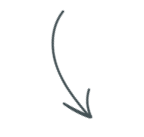The key components of a high converting website
I’m in the middle of a chocolate-mint tea search when I notice a new site, I click it and am immediately taken to some great pictures. One is of this really cool looking teapot that, even if it cost like $5K (it was around $200), would be worth buying for that picture alone. Anyway, there’s also some good information about how they make their teapots so you know what you’re buying into–even though no matter which one they made would be worth getting too because all the designs are just stunning. Who knew something as simple as tea could look so lovely?
That’s the conversion power of a great brand and website design.
If you want to build a website that converts, there are a few things you need to do. First of all, it should be clear what the goal is on each page and how the user will interact with that page for maximum conversions. The next thing to consider would be typography – making sure that typefaces work together well and are readable at different sizes for various screens. White space is also important because it guides users from one part of your website to another in order to support conversion goals.
Let’s go over these 5 fundamental elements for a great website design:

Have a clear and concise message
The best way to convert your website visitors into customers is by creating a well-written copy that directly addresses their needs. In the first second of landing, before they scroll if possible, you should make it super clear: what you do and who you do it for. Oh, and if you do business with locals (or if your location is important to your service) you bet it’s crucial to have that be clear and easy to find information (I’m looking at you photographers).
Your brand message should be front and center. Who do you serve? How do you serve them? The simpler, the better.
Remember, you want to be clear, not clever. You can keep it interesting but confused minds don’t purchase, and we are aiming for conversions here!
This also ties to your navigation. You want your website to be easy for the visitor to navigate and find what they need. You do this by dividing up content into categories, making it clear where each section is located on the site.
Have a website and page goal
A great website is one that has a clear goal on each page. Their sales pages should keep the visitor’s attention by providing them with valuable information and get them to purchase whatever you are selling.
Your homepage should be your best salesperson. It should entice people to keep reading and convince them to convert, whether it is through email signups or purchases.
See why having a goal per page is crucial?
You need to know what each page is supposed to do in order to move people through your website. Remember this is your online home, and you are giving your users a hand-guided tour. You decide their path and how they should consume the content, so being intentional with what each page should do so you can convert more people is definitely something you should do even before thinking about design.
Make sure your homepage communicates quickly why people should read more and convert; make calls-to-actions clear so they know exactly where to go next, which might be something like signing up for your newsletter, viewing your portfolio, learning about your signature service, etc. This is your gateway, the door to the rest of the site. You are guiding them but also providing them with a way to find what they need in an easy way.

Guiding calls to action
When you want someone to take action, you need to be timely with your request. You can’t ask someone who just met you to purchase from you that $5K course.
First let me say: You need a call to action on every single page of your website. There, I said it. No dead ends, ever. (Imagine me saying this with Edna Mode’s passion against capes on superhero suits).
Calls to action are your guiding elements and they need to be used at the right time.
Here are some types of call-to-action items you can use based on your customer’s journey:
Inviting tour call to action:
Literally, this is to continue on, leading them “where to go next”. This is what you’ll use to move them from the home page to other pages. This type of call to action is used in the initial stages of your customer journey.
Exploring call to action:
This is one you should use when building trust with your audience, and it’s usually for things where there is “more to do” like reading blog posts or watching pieces of training, etc. The kind where you are guiding them to more content.
Self-identifying call to action:
This type of call to action is there to help people “pick their path” so they can self-identify their current needs and learn more about how you solve that problem. If you go to my home page you’ll see an example of this where I let them choose if they need a brand and website design service (our signature offer) or if they need a shop, or if they want a Showit membership site.
Immediate move call to action:
This is a very literal call to action: If you want to buy this thing, press this button. If you want to ask me a question, press that button. Make sure that your words say what they are supposed to. Don’t make them click more than once, you are already asking them to take that immediate move, so if it says “call now” it better be linked to actually make a call.
Have them consume the content effectively with the right white space
Guide your audience so they read the right thing, in the order you want them to read it.
It’s very important to use appropriate white space for scanning and digesting content quickly- that way people will take an action when it’s most effective!
I know that sometimes presenting information on a page can be overwhelming or difficult for people to process all at once. That’s why letting white space help guide readers’ eyes around and make sense of what you’re trying to say as quickly as possible without getting hung up on any one piece of content too long is going to be one of your best moves.
Have you ever been reading a page and then you get to the end of it and have no idea what just happened? The content was all mixed up, with images in text paragraphs or nothing but headings. It’s not an enjoyable experience for any reader- even if they’re on your website because they wanted to buy something from you. Don’t make it hard. Make it clear, easy, and intentional.
Have a professional website design with consistent (and branded) attention to detail
Your website style will be dictated by your brand to appeal to the right audience, but it’s important to be consistent for a polished look.
Be careful with your fonts and how you use them. Your brand guidelines should already outline what fonts you use (I recommend no more than 3 styles to keep it clean and intentional with the hierarchy), and how to use them properly for the right attention and the feeling you need to evoke.
I recommend you create a “style board” for your site
If you create this visual guide, a style board, and implement it on the home page first since that is the main page on your site, this will set the stage for the rest of the site. Not only will this ensure consistency but it will also help you to create a plan for how your site should look and feel. By setting the style on the home page first, you can easily know how each section should look, how buttons will be formatted, any image treatments, etc. Work smarter and get this checked off the list before working on more pages so you don’t have to be jumping around changing things later on.
Typography is an important piece of the puzzle because it can really affect conversion rates.
For example, if there’s too much text on one page but not enough white space, it can be very intimidating and difficult to read. It may even cause them to simply exit the site. So have your headings guide the message on the site, remember people will skim through (sorry, I know you put a lot of effort into writing your copy!), so the way you use your fonts will allow for visual interest so that your message comes across clearly.
You’ve now learned about the basics of how to build a website that converts. If you have any questions or are ready to get started, let me know! We can help you create an expert Showit web design for your business will strategic content and on-page SEO so that your site is found by potential customers on search engines like Google.
Do you want someone who understands conversion-driven websites to do all the work for you? Let’s chat today – I’d love to hear from you! (Psst, there’s a quick form right below this article!)

filed under:
@penguindesigning
I'm Ingrid, welcome! I'm a branding designer + Showit Design Partner, doggy mamma, and tea drinker.
get to know me »
P.S. Found value in this post? You can always drop a little something in my treat jar — this goes toward treats for my pup (yes, Yui loves it) and fueling more great content! 💜
Ready to turn your website into a powerhouse lead generator even on a saturated market?
My free guide, "5 High Converting Website Tricks", gives you key strategies to create a website that showcases your brand, attracts your ideal clients, and is ready to convert them into paying customers.
Download now for free!
Featured Projects
Jen Wagner Co
Shopify to showit shop Migration
Katelyn James
Showit Shop + Courses + Membership
Blanc Salváge
Brand Strategy + showit Shop Design + Copywriting
Revitalized Health & Wellness Counseling
Custom Brand + Website
Wordfetti + Wordshop
showit Website + shop Design & Development
Editorial Stock Images
showit shop + Multi-level Membership
Hi I’m Ingrid
I design strategy-led brands and Showit websites that confidently represent you.
I’m a designer with a magic touch for monetizing websites. I’m also a tea-lover, dog momma, Ravenclaw, INFP and 2w3 (for all you personality-test nerds like me).
I’ve also been called a Showit website expert (been with them since 2013), and a sucker for understanding customer journeys, brand psychology, and consumer and sales psychology. My clients have some pretty cool results after working together, things like doubled shop conversions, booked-out services in weeks, and increased monthly revenue, among other cheer-worthy celebrations.
Get to know me



